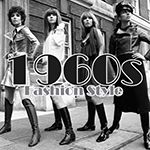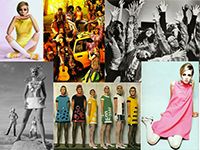The Beginnnings of the Women Psychedelic Fashion Trends
It’s absolutely no mystery to anyone that the present touch on the catwalks is truly one of escapism, an inducement from another era. In a similar way, one as turbulent as much of our own surfaced as being one of Summmer’s most important motifs. Households posted selections that appeared to the touchstones of the later part of ’60s and also early 1970s. From Tommy Hilfiger’s Sgt. Pepper militia to the gilded, luxurious imaginative and prescient vision of bohemia at Dries Van Noten, that resulted in models couching dreamily on the mossy green runway.

The 1960s presented several unique trends in fashion. This was a decade that broke most fashion culture, mirroring social movements at that time. During the decade, box-shaped PVC dresses, go-go boots, culottes, as well as other PVC clothing that evolved into classy fashion. Also, the generally famous Bikini developed into fashion trends in the 1963 after being showcased in the musical Beach Party.
So, this spike of interest wasn’t merely restricted to the fashion industry, the culture at large was apparently looking back to the time period, for example, one of the year’s most joyful movies – “and surefire Best Picture bait” was Paul Thomas Anderson’s variation of Implicit Vice, a trippy venture on classic noirs, arrived at the Los Angeles of 1970 and also depending on the Thomas Pynchon novel of the exact same name. André Benjamin’s turn being Hendrix in Jimi; “All Is by My Side” got its American minimal launch in the late September. Even certain psychedelic drugs were experiencing a new vogue.

Mary Quant created the mini-skirt, while Jackie Kennedy unveiled the pillbox hat and both become highly popular. Also, man-made eyelashes were used by women all through the 1960s; in addition, their hairstyles were of varied styles and lengths. Folks were dressing up in psychedelic prints, mismatched designs and highlighter color patterns. In the late decade, the hippie movement actually had a powerful influence on ladies' dressing styles, including v, bell-bottom jeans, batik fabrics and also tie-dye.
Moreover, in the early to mid ‘60s, the London Modernists often called the Mods were really shaping and as well defining trendy fashion for young British folks whilst the trends for both men and women changed more often than ever in the historical past of fashion and would continue changing all through the decade.
More so, designers were making dresses more desirable for the young people, which resulted to a rise in interest as well as sales.

Validate your login
Sign In
Create New Account